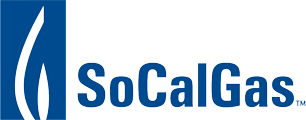The Placentia-Yorba Linda Unified School District serves 27,000 kindergarten through 12th-grade students in 33 schools dotting 45 square miles of Orange County. Although the district replaced most of its bus fleet in 1994 with diesel-powered models expected to last about 20 years, it welcomed the opportunity to replace six circa-1985 diesel buses with ones that run on compressed natural gas (CNG).
In addition to 79 diesel and gasoline-powered buses, the district’s fleet now includes four large CNG buses for home-to-school transportation and field trips to educational and athletic events, plus two smaller CNG buses to shuttle special education students to and from school.
“The South Coast Air Quality Management District (SCAQMD) fleet rules required alternative-fuel replacement buses, and with the funding offered for CNG buses and a fueling station, it made even more sense to begin the process of converting over from diesel,” says Steve Umber, director of transportation for the school district. Umber heads the school district’s Transportation Department of approximately 100 people – drivers, mechanics, instructors, dispatchers and supervisors.
Grants Covered 80 Percent of Total Start-Up Costs
The SCAQMD awarded approximately $500,000 in grants, or 80 percent of the total costs, for the six CNG buses and on-site refueling station. The school district also chose CNG buses, Umber says, because they “have a proven history of safety,” the selected CNG engines “are a good product,” and the buses came from the factory instead of being retrofits, “which is an advantage because support and training from the engine manufacturer is critical.”
He notes that his SoCalGas® account executive introduced the concept of CNG buses to the school district in 2000. “They guided us through the understanding of many safety and cost questions,” Umber says. “In addition, when funding became available, the account executive assisted with SoCalGas' role in providing new natural gas lines to the fueling system.”
Drivers Love these Buses
"We’ve received many compliments from site principals thanks to the reductions in smoke, diesel particulates and noise."
“Our drivers love these buses,” says Umber. He describes the new buses as “clean and efficient,” with power delivery that is surprisingly “quiet and smooth. We’ve received many compliments from site principals thanks to the reductions in smoke, diesel particulates and noise. Staff and parents have given very positive comments about the lack of black diesel smoke and said they were happy to see clean-burning buses.”
Umber’s initial concerns about the costs of staff training and infrastructure were easily resolved. The bus distributor assisted with training the school district’s mechanics, and the SCAQMD grants covered most of the cost of building a four-compressor, “time-fill” CNG refueling station.
Eliminating Downtime
“The time-fill system eliminates the downtime spent in fueling lines since each bus is simply hooked up at the end of each day for an overnight fill,” says Umber. “It’s convenient for the drivers to start each morning with a fully fueled bus.”
"It’s convenient for the drivers to start each morning with a fully fueled bus"
Umber noted in an October 2005 interview that “diesel fuel costs have doubled in the last 18 months, so running on CNG has reduced the cost per mile significantly.”
This district is looking forward to more CNG buses as soon as possible,” Umber says. “There’s more power with less mess and a better public impression. This district wants to go 100 percent CNG.”

